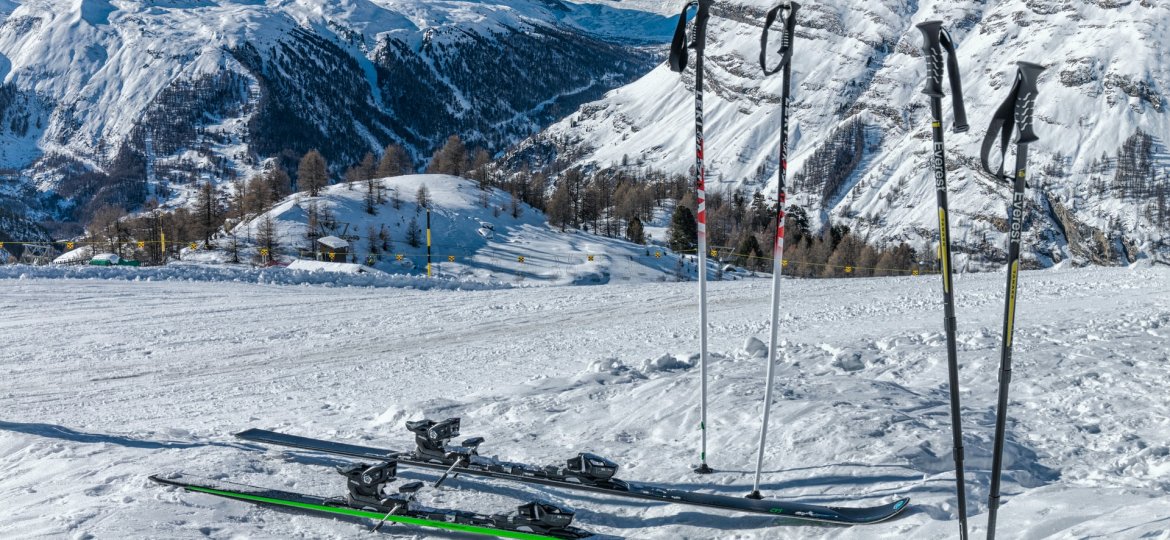Skiing
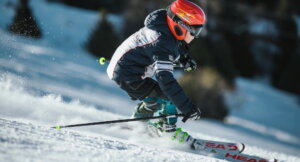
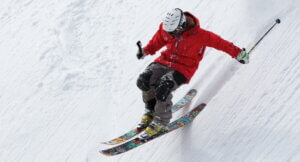
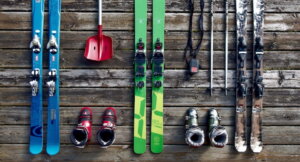
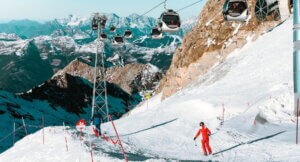
Skiing, one of the most popular winter sports, is an exciting way to enjoy the snow-capped slopes. The history of skiing can be traced back over 4,000 years to Norway where it originated. Over time, skiing has evolved into various styles, including alpine, cross-country, and freestyle skiing.
Skiing, one of the most popular winter sports, is an exciting way to enjoy the snow-capped slopes. The history of skiing can be traced back over 4,000 years to Norway where it originated. Over time, skiing has evolved into various styles, including alpine, cross-country, and freestyle skiing.
Skiing, one of the most popular winter sports, is an exciting way to enjoy the snow-capped slopes. The history of skiing can be traced back over 4,000 years to Norway where it originated. Over time, skiing has evolved into various styles, including alpine, cross-country, and freestyle skiing.
Skiing, one of the most popular winter sports, is an exciting way to enjoy the snow-capped slopes. The history of skiing can be traced back over 4,000 years to Norway where it originated. Over time, skiing has evolved into various styles, including alpine, cross-country, and freestyle skiing.
Skiing, one of the most popular winter sports, is an exciting way to enjoy the snow-capped slopes. The history of skiing can be traced back over 4,000 years to Norway where it originated. Over time, skiing has evolved into various styles, including alpine, cross-country, and freestyle skiing.
Skiing, one of the most popular winter sports, is an exciting way to enjoy the snow-capped slopes. The history of skiing can be traced back over 4,000 years to Norway where it originated. Over time, skiing has evolved into various styles, including alpine, cross-country, and freestyle skiing.
Skiing, one of the most popular winter sports, is an exciting way to enjoy the snow-capped slopes. The history of skiing can be traced back over 4,000 years to Norway where it originated. Over time, skiing has evolved into various styles, including alpine, cross-country, and freestyle skiing.
Skiing, one of the most popular winter sports, is an exciting way to enjoy the snow-capped slopes. The history of skiing can be traced back over 4,000 years to Norway where it originated. Over time, skiing has evolved into various styles, including alpine, cross-country, and freestyle skiing.
Skiing, one of the most popular winter sports, is an exciting way to enjoy the snow-capped slopes. The history of skiing can be traced back over 4,000 years to Norway where it originated. Over time, skiing has evolved into various styles, including alpine, cross-country, and freestyle skiing.
Skiing, one of the most popular winter sports, is an exciting way to enjoy the snow-capped slopes. The history of skiing can be traced back over 4,000 years to Norway where it originated. Over time, skiing has evolved into various styles, including alpine, cross-country, and freestyle skiing.
Skiing, one of the most popular winter sports, is an exciting way to enjoy the snow-capped slopes. The history of skiing can be traced back over 4,000 years to Norway where it originated. Over time, skiing has evolved into various styles, including alpine, cross-country, and freestyle skiing.
Alpine skiing, also known as downhill skiing, is the most well-known form of skiing and involves skiing down a steep slope at high speeds. This type of skiing requires specialized equipment, including skis, boots, and poles, and is typically done at ski resorts. Alpine skiers have a wide variety of trails to choose from, ranging from beginner-friendly slopes to challenging expert runs.
Cross-country skiing, on the other hand, is a more relaxed and aerobic form of skiing. It is done on flat or gently rolling terrain. Cross-country skiers use skis and poles to propel themselves forward, and the sport is often done in rural and wilderness areas. This type of skiing is an excellent way to enjoy the outdoors while getting a good workout. Cross-country skiing can be done at a leisurely pace or as a competitive sport.
Freestyle skiing is a relatively new form of skiing that involves performing aerial tricks and stunts in a controlled environment, such as a ski park or halfpipe. Freestyle skiers use specialized equipment, including skis and poles, and wear protective gear to reduce the risk of injury. This type of skiing is often performed in competitions and is a popular spectator sport.
Overall, skiing is an exhilarating winter sport that offers something for everyone, whether you’re a beginner or an experienced skier. With its various styles, including alpine, cross-country, and freestyle skiing, there’s no shortage of excitement and adventure to be had on the slopes.
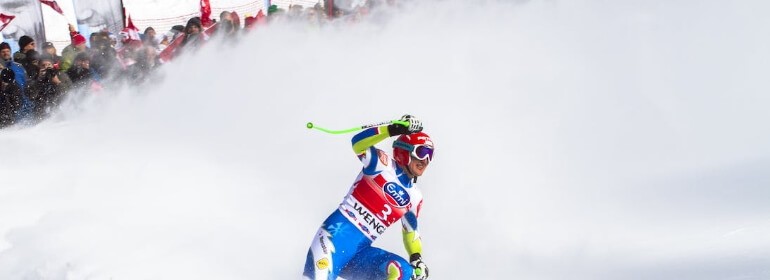
Skiing is a popular winter sport that has been enjoyed for over 4,000 years. It originated in Norway and has since evolved into several different styles, including alpine skiing, cross-country skiing, and freestyle skiing. In this article, we will explore each type of skiing in detail and provide information on the equipment needed, the physical benefits, and safety practices.
Alpine skiing, also known as downhill skiing, is the most popular form of skiing. It involves skiing down a steep, groomed slope at high speeds. This type of skiing requires specialized equipment, such as skis, boots, and poles, and is typically done at ski resorts. Alpine skiers can choose from a variety of trails, ranging from beginner-friendly slopes to challenging expert runs. Some ski resorts offer courses and lessons to help skiers improve their skills and abilities.
Nordic skiing, also known as cross-country skiing, is a more low-key and aerobic form of skiing that involves skiing on flat or rolling terrain. Cross-country skiers use skis and poles to propel themselves forward, and the sport is often done in rural and wilderness areas. This type of skiing is a great way to enjoy the outdoors and get exercise, and it can be done at a leisurely pace or as a competitive sport. Nordic skiing is also a popular mode of transportation in areas with heavy snowfall.
Freestyle skiing is a newer form of skiing that involves performing aerial tricks and stunts in a controlled environment, such as a ski park or halfpipe. Freestyle skiers use specialized equipment, including skis and poles, and typically wear protective gear to reduce the risk of injury. This type of skiing is often performed in competitions and is a popular spectator sport. It requires a high level of skill and practice to perform the intricate tricks and maneuvers.
To participate in skiing, it is important to have the proper equipment. Skis are the most important piece of equipment, and they come in different sizes and styles depending on the type of skiing. Alpine skis are shorter and wider, while Nordic skis are longer and narrower. Ski boots should fit snugly and provide support for the ankles and feet. Ski poles are used for balance and propulsion and should be the appropriate length for the skier’s height.
Protective gear is also important for safety on the slopes. Helmets are recommended for all skiers, and goggles are necessary to protect the eyes from wind and snow. Insulated jackets and pants, gloves, and hats are also necessary to stay warm and dry in cold, snowy conditions.
Skiing provides a full-body workout and improves balance, coordination, and cardiovascular health. It is also a social activity that can be enjoyed with friends and family. Many ski resorts offer amenities such as lodges, restaurants, and bars, making it a fun, all-day outing.
However, skiing can also be dangerous and requires caution and proper safety practices. Skiers should always be aware of their surroundings, obey ski patrol and signage, and never ski beyond their ability. Skiing under the influence of drugs or alcohol is also strictly prohibited.
Skiing is a popular winter sport that involves sliding down snow-covered slopes using skis. It’s a thrilling activity that provides an adrenaline rush while also allowing people to enjoy the beauty of the winter landscape. There are several different types of skiing, including alpine skiing, Nordic skiing, and freestyle skiing, each with its unique set of techniques and equipment.
Alpine skiing is the most common type and involves skiing down steep, groomed slopes. It’s perfect for thrill-seekers and provides an intense workout that engages the core and leg muscles. Nordic skiing, also known as cross-country skiing, involves traveling across flat or gently rolling terrain, making it an ideal option for those who enjoy a more leisurely pace. It’s a low-impact exercise that improves cardiovascular endurance and provides a full-body workout. Freestyle skiing involves performing acrobatics and tricks in the air, usually in a terrain park or halfpipe. It requires advanced skills and is an exciting spectacle to watch.
In order to participate in skiing, one must have the proper equipment, including skis, boots, poles, and protective gear. It’s also important to have the proper clothing and accessories to stay warm and dry, such as insulated jackets, gloves, and goggles. Choosing the right equipment can greatly impact your skiing experience, so it’s essential to invest in quality gear that fits well and is appropriate for your skill level.
Skiing can be enjoyed by people of all ages and abilities, with slopes available for beginners, intermediate skiers, and advanced skiers. It’s also a great way to get exercise, as it provides a full-body workout and improves balance and coordination. Additionally, skiing is a social activity that can be enjoyed with friends and family. Many ski resorts offer amenities such as lodges, restaurants, and bars, making it a fun, all-day outing.
However, it’s important to note that skiing can also be dangerous and requires caution and proper safety practices. Skiers should always be aware of their surroundings, obey ski patrol and signage, and never ski beyond their ability. In addition, skiing can have an impact on the environment, with ski resorts potentially disrupting the natural landscape and consuming large amounts of water and energy. Ski resorts and skiers are becoming more conscious of their environmental impact, taking steps to minimize it, such as using renewable energy sources and promoting sustainable tourism.
Skiing has a rich cultural history, with evidence of skiing dating back to prehistoric times. In Scandinavian countries, skiing has been a means of transportation for centuries and has played a role in the development of their culture and economy. Today, skiing continues to be a cultural phenomenon, with ski resorts becoming popular tourist destinations and ski competitions being held worldwide. It has also inspired art, literature, and music, making it a significant aspect of human culture and history.
In addition to its cultural significance, skiing has a positive impact on local economies. Ski resorts provide jobs for thousands of people, and skiing-related tourism generates billions of dollars in revenue each year. This can help support local businesses and communities, leading to the development of ski-based towns and villages around the world.
Apart from the cultural and economic significance, skiing has numerous health benefits. Skiing is an excellent form of cardiovascular exercise that improves heart health and increases endurance. It engages many different muscle groups, including the legs, core, and upper body, providing a full-body workout that strengthens muscles. Spending time in the great outdoors and participating in physical activity can also help reduce stress and improve overall mental health. Skiing requires good balance, which can help to improve stability and coordination, especially as we age. Additionally, spending time in the sun while skiing can help to boost vitamin D levels, which is essential for strong bones and overall health.
It’s important to remember that skiing can
be physically demanding, so it’s essential to prepare adequately, warm up before hitting the slopes, and take breaks as needed to avoid injury. One common injury associated with skiing is knee injuries, which can occur when the skier twists their knee or falls awkwardly. To prevent knee injuries, skiers should ensure that their bindings are correctly adjusted and avoid skiing on slopes that are too advanced for their skill level.
Another common injury among skiers is a concussion, which can occur when the skier falls and hits their head on the ground or another object. To reduce the risk of a concussion, skiers should wear a helmet that fits correctly and meets safety standards.
In addition to these injuries, skiers can also suffer from hypothermia or frostbite if they are not dressed appropriately for the cold weather. Skiers should wear layers of clothing that can be easily removed or added as needed to maintain a comfortable body temperature. They should also wear gloves, hats, and goggles to protect against the cold and wind.
Overall, skiing is a thrilling and enjoyable sport that offers many benefits, including physical exercise, social opportunities, and cultural significance. However, it’s essential to remember that skiing can also be dangerous, and proper safety measures must be taken to prevent injury. By following safety guidelines, skiers can enjoy all the benefits of skiing while minimizing the risks.
Skiing gear
When it comes to skiing, having the right gear is essential. Proper skiing gear can make all the difference in the enjoyment of the sport and even more importantly, can affect the safety of the skier. Skiing gear typically includes skis, boots, bindings, poles, helmets, goggles, gloves, base layers, outerwear, and socks.
Skis are the most important piece of equipment for skiing, and they come in different shapes, sizes, and designs for different types of skiing. Skis are long, narrow boards that are attached to the skier’s boots to allow them to glide down the slopes. There are various types of skis available in the market, including all-mountain skis, freestyle skis, powder skis, and carving skis.
Ski boots are specially designed to provide support and stability while skiing, and they are typically made from a combination of plastic and synthetic materials. They come in different shapes and sizes and should fit snugly to provide adequate support and control.
Bindings connect the skis to the boots and are designed to release the skier’s foot in the event of a fall. There are different types of bindings available, including alpine bindings, touring bindings, and telemark bindings, each designed for a specific type of skiing.
Ski poles are used for balance and stability while skiing. They also help skiers push off when starting down the slope. Ski poles come in various lengths and materials, and choosing the right one depends on the skier’s height and skiing style.
A helmet is an essential safety item that can help to prevent head injuries. A ski helmet should fit snugly and cover the entire head, providing protection from impacts and falls.
Goggles are another important safety item that protect the eyes from the sun and wind and improve visibility on the slopes. They come in various shapes and sizes and should fit comfortably over the helmet.
Gloves protect the hands from the cold and provide grip and control. Ski gloves should be waterproof and insulated to keep hands warm and dry.
Base layers help to regulate body temperature and keep the skier warm. They should be moisture-wicking and breathable, allowing sweat to escape and keeping the skier dry.
Outerwear, such as jackets, pants, and hats, can help to protect against the cold and wind while skiing. Ski jackets and pants are designed to keep skiers warm and dry on the slopes. They should be waterproof and breathable to keep the skier comfortable.
Socks are often overlooked, but they are an essential part of skiing gear. Warm, moisture-wicking socks are important for keeping feet warm and dry while skiing. Ski socks should fit snugly and be made from materials that wick moisture away from the skin.
Training
Ski training is a crucial aspect of preparing oneself physically and mentally for skiing. Skiing is an exciting and exhilarating sport, but it also requires a certain level of physical fitness and mental preparation to reduce the risk of injury and improve overall performance. Ski training encompasses a range of activities, including physical conditioning, balance training, technique training, mental preparation, equipment familiarization, warm-up, and stretching.
Physical conditioning involves building strength, endurance, and flexibility to prepare the body for the physical demands of skiing. Skiing requires a lot of leg and core strength to maintain balance and control on the slopes. Therefore, regular exercise that focuses on these areas, such as squats, lunges, and planks, can be extremely beneficial. Cardiovascular exercise, such as running, cycling, or swimming, can also help to build endurance and improve overall fitness.
Balance training is essential to help skiers feel more confident and stable on their skis. Balance exercises such as standing on one leg, balance boards, and stability balls can help improve balance and stability. This is especially important for beginners who are just learning to ski and need to develop the necessary balance and coordination skills.
Technique training is another critical aspect of ski training. Taking lessons from a professional instructor or practicing specific techniques on the slopes can help improve your skiing ability and make you a more efficient skier. Proper technique can help skiers conserve energy, reduce the risk of injury, and improve overall performance on the slopes.
Mental preparation is just as important as physical preparation. The right mindset can help reduce anxiety, increase confidence, and improve overall performance on the slopes. Visualization exercises and mental rehearsal can help skiers mentally prepare for their skiing experience and visualize themselves successfully navigating the slopes.
Equipment familiarization is also an essential aspect of ski training. Becoming familiar with your skiing gear and equipment can help you feel more confident and in control on the slopes. This includes everything from knowing how to properly put on and adjust your boots to understanding how your bindings work.
Warm-up and stretching are crucial to help reduce the risk of injury and improve performance. Before hitting the slopes, it is essential to take the time to properly warm up your muscles and joints. This can include light aerobic exercise, such as jogging or jumping jacks, to get your blood flowing and loosen up your muscles. Stretching before and after skiing can help improve flexibility, reduce the risk of injury, and aid in recovery.
When to go skiing is another essential factor to consider. The timing depends on personal preference, skill level, and the availability of snow. The winter months, typically December through March, are the best time to go skiing, as this is when the snow is deepest and the weather is coldest. However, holidays such as Christmas and Presidents’ Day are popular times to go skiing, and ski resorts can be crowded and more expensive during these times.
If you’re looking to avoid crowds and save money, consider skiing on weekdays instead of weekends, when ski resorts are typically less busy. Skiing in the morning or late afternoon can also help avoid the crowds and the sun. This is also a good time to ski if you’re a beginner or intermediate skier, as the snow will be softer and easier to ski on. Spring skiing can be a great option for those looking to ski in warmer weather and enjoy longer days.
- Long awaited Playstation 5
- A revolutionary piece of technology
- It has changed the Gaming world
- It comes with Ultra high speed SSD
- Long awaited Playstation 5
- It comes with Ultra high speed SSD
- Velit esse cillum dolore eu fugiat nulla pariatur
- A revolutionary piece of technology
- A revolutionary piece of technology
- A revolutionary piece of technology
- It comes with Ultra high speed SSD
- Ullamco laboris nisi ut aliquip ex ea commodo
- Duis aute irure dolor in reprehenderit in voluptate
- It comes with Ultra high speed SSD
Trademark Disclaimer:
All trademarks, logos, and brand names are the property of their respective owners. All company, product, and service names used in this website are for identification purposes only. Use of these names trademarks, and brands do not imply endorsement.


